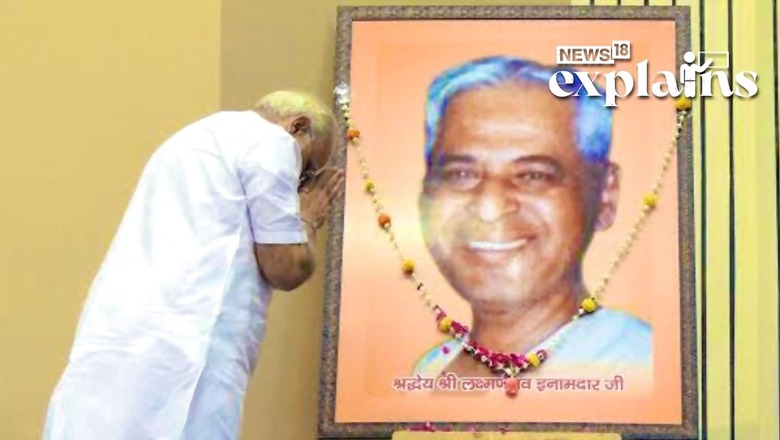
views
On the 100th episode of Prime Minister Narendra Modi’s radio programme Mann ki Baat, he made a mention of Laxman Rao Inamdar, the advocate and RSS leader, considered his mentor.
“I had a mentor, Shri Laxman Rao Ji Inamdar. We used to call him Vakil Saheb (Advocate sir). He would always say that we must worship the good qualities in other people. Whoever it might be, an associate or an opponent, we must always try to understand their good qualities and try to imbibe them within ourselves. His words have always inspired me. Mann ki Baat has become an important medium of learning from others,” Modi said in his programme.
But who was Inamdar? News18 Explains:
‘Vakil Saheb’
Laxman Rao Madhav Rao Inamdar, also known as Vakil Saheb, founded Sahkar Bharti on September 19, 1917 and was a founding member of the RSS in Gujarat. He is credited with inducting Modi into the RSS as a balswayamsevak (junior cadet) and serving as Modi’s political mentor, as per reports.
How He Shaped Modi’s Mind
As per a ThePrint report on how Inamdar shaped Modi’s political ideas, Modi would participate in RSS’ grassroots activities, such as flyer distribution, and he regularly attended the organization’s daily sessions.
This distraction from the everyday grind at school and at the tea stall soon became a catalyst for him to explore and grow. While Modi was shaped by the RSS, it also served as a launching pad for his foray into active politics. Through the RSS, Modi met Lakshmanrao Inamdar, who would later become his political mentor.
Political biographer Kingshuk Nag is quoted as saying in the report that Modi is seen as Inamdar’s ‘Manas Putra,’ or ideological offspring, among RSS circles. While different chroniclers place the young Modi’s first interaction with Inamdar at different times in his life, Modi claims it happened while he was a student cadet. Inamdar was an avid RSS member who travelled widely throughout Gujarat to construct RSS shakhas.
‘Great Reverence for Inamdar’
“Narendra Modi’s formative years were spent in RSS and Vakil Saheb has had the greatest impact on him,” Seshadari Chari, BJP leader, told India Today in a report.
According to Prabhat Kumar, who has published four of Modi’s book including a biography on Inamdar himself, Modi attributes his entire personality to Vakil Saheb.
Nilanjan Mukhopadhyay, author of the 2013 biography Narendra Modi: The Man. The Times is quoted in the report as saying that Modi’s regard for Inamdar is exceptional. “I haven’t seen Modi have this kind of reverence for anyone, living or dead,” he says.
Inamdar was born in 1917 in Khatav, a village 130 kilometres south of Pune. He joined RSS in 1943, shortly after finishing his law degree at Poona University, as one of ten children of a government revenue official. He took part in the liberation struggle, led agitations against the Nizam’s government in Hyderabad, and subsequently chose the austere life of a pracharak–of bachelorhood and a rootless existence–in Gujarat, the report says.
Tasks During Emergency and a Leap Afterwards
When emergency was declared in India, Vakil Sahab set aside Modi for underground resistance. Initially, he transported proscribed pamphlets to a Commonwealth parliamentary conference in Delhi, as per Economic Times.
Later, Vakil Sahab tasked Modi with escorting George Fernandes to safe houses, both leaders in disguise. Images of Modi disguised as a Sikh and a sanyasi are from this time period.
After the Emergency was lifted, Inamdar gave Modi’s career a boost. He was dispatched to Delhi once more, this time to coordinate documentation of RSS opposition throughout the dark months, the report explains. Modi’s career took off after that, and he was promoted to Vadodara as Vibhag Pracharak first, and then Sambhag Pracharak.
Interactions grew less regular, but whenever Modi visited Ahmedabad, he never missed an opportunity to spend time with his guru. By the time Modi was appointed to the BJP by the RSS in 1987, his mentor had died, but his influence could not be ignored in his absence.
Read all the Latest Explainers here
















Comments
0 comment